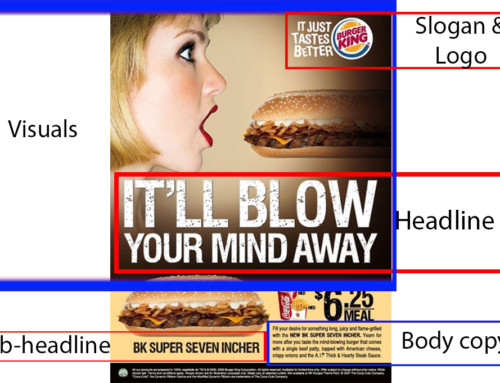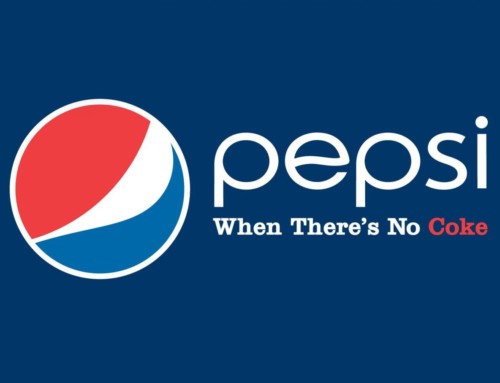Advertising research begins before you create an advert. If you don’t research your advertising before creating the advert, you are spending more money on advertising than you have to.
Picture this – You are spending tens of thousands, or even hundreds of thousands of dollars, on advertising. How can you approve such a budget without the required information?
Is launching an expensive advertising campaign without pre-testing it sound wise to you? Won’t such an approach increase the chances of failure? For example, signing off on a big-budget advert without first surveying buyer behavior and consumer preference is not a good move. The pitfalls of not evaluating your advertising before creating the advert itself, are numerous. I will cover some of the pitfalls in this article.
There are also some other factors that you have to consider when evaluating an advert. Changes in the pattern of supply and demand are some of the factors. You have to measure and isolate factors such as these, that might give a picture that does not reflect the true impact of your advertising efforts. Let me shed more light on this below.

Evaluating an advertisement is not done in isolation. There are factors that you have to consider that will affect the success of a product whether or not you roll out an advertisement. Analysing these factors will prevent situations where adverts take credit for impacts that they did not have and vice versa. Let us look at some of the factors that you have to consider.
Factors That You Have To Account For When Determining The Impact Of An Advertisement
Supply & Demand
In microeconomics, supply and demand is an economic model of price determination in a market. It postulates that holding all else equal, in a competitive market, the unit price for a particular good, or other traded item such as labor or liquid financial assets, will vary until it settles at a point where the quantity demanded (at the current price) will equal the quantity supplied (at the current price), resulting in an economic equilibrium for price and quantity transacted.
Wikipedia

A well-executed advertising campaign brings in abnormal profits. However, if an advertisement coincides with an event where demand grows, naturally regardless of advertisements, then it is important to factor in such external influences when evaluating the impact of an advertisement. When the Playstation or any other important product is launches, large queues form. It is easy to assume that pre-launch advertising did the trick. If you are a gamer, you will realise that Sony does not advertise much before the launch of a Playstation, as it relies on brand equity to sell the product. I can guarantee that marketers at Sony attribute launch sales success to advertisements. This is a form of misrepresentation.
Changes In Consumer Behavior
Another factor you have to cater for are changes in buyer behavior that may favour a product, or otherwise. Consider the case of ZOOM.
Zoom has hit the headlines recently for a growing number of security and privacy concerns, but that doesn’t seem to have stopped people from flocking to the video conferencing app. Zoom has now revealed that it has surpassed 300 million daily Zoom meeting participants. That’s up 50 percent from the 200 million the company reported earlier this month, and a huge jump from the 10 million back in December.
The Verge
Zoom’s growth continues unabated as more people are turning towards the service to keep connected during the ongoing coronavirus pandemic. British lawmakers even broke from 700 years of tradition in the Houses of Parliament yesterday by introducing Zoom-powered video links. 120 Members of Parliament join through a Zoom call, while another 50 are allowed to be physically present in the chamber.
The pandemic has resulted in most people working from home. Business Continuity Measures put in place by various organisations have resulted in people having meetings online on applications such as ZOOM. ZOOM advertises its service but I am sure the current return on investment surprises the marketing team..
With this in mind, ZOOM should consider the change in consumer behavior brought about by the pandemic that has improved the return on investment from their advertising. This will ensure that they do not overstate their success and then go on to rely on frameworks that will not work in the future where, hopefully, the pandemic will have ended.
Actions Of Competitors
Sometimes things go well as a result of the mistakes of others, and vice versa.

In a famously failed advertising campaign in 2006, Sony celebrated the release of its new white PSP device with giant billboards that were a giant mistake.
EZ Marketing
The billboards all had a central theme: a white woman subduing a black woman, representing the new white PSP model’s dominance over the older black portable console. While Sony didn’t intend the ad campaign to be racist, the fact that so many people were offended by the photographs speaks for itself.
A failure like this hurts a brand and makes passionate people look to other advertisements and brands. Those at Nintendo who were advertising the Nintendo DS probably realised a better return on investment on their advertising spend. In a situation like that, it would have been important for them to account for Sony’s mistakes in their reporting.
While mammoth errors like Sony’s are few and far apart, mistakes of a smaller magnitude occur daily. Make it a habit to continuously scan your environment and take stock of such errors when evaluating your advertising.
Align The Structure Of The Research With The Objectives Of The Advertising Campaign
Take into consideration the following objectives of an advertising campaign:
- Introduce a product
- Present a brand
- Creation of awareness
- Acquiring customers
- Differentiation and value creation
- Brand building
- Product positioning
- Increasing sales
- Increasing profits
- Creating desire
- Call to action
The different objectives are expressed in different ways. Some of these objectives result in qualitative information being produced from the research. The other objectives result in quantitative information being produced. The difference in the output calls for the use of research structures that are vastly different. As a result, the objectives of an advertising campaign have to be taken into consideration when creating the framework for the research.
Basic questions regarding the overall objectives of promotional strategy and of a particular campaign under review should be asked. What influenced the setting of these objectives? How can the achievements of these objectives be measured? A description of the various methods which are used for measuring the effectiveness of an advertising campaign is dysfunctional without a reference to the circumstances in which a technique becomes applicable
The development of advertising goals, and a sound basis for evolving an evaluation framework, can be aided by thinking of the following five stages in a purchase decision.
- Problem or need recognition
- Information search
- Evaluation of alternatives
- Purchase
- Post-purchase behavior
The objective sets the boundaries and informs the framework of the evaluation. If we are looking at the Information Search stage, the evaluation will be qualitative. Respondents give details of the information that they managed to obtain about your product or service. Making use of qualitative data demand that you use certain regression models, instead of regression models that apply to quantitative data.
Draw References From Past Advertising Campaigns
Continuous analysis of past advertising experience, in search of guidelines for an analytical framework, is a very useful first step. The rule does not apply for new advertisers or new products. Such an analysis can provide a valuable basis for reviewing, and developing an advertising strategy.
The analysis is important as it helps the researcher to align with the marketing culture of the organisation. Remember, the goal is to evaluate the advertising, and not reinvent it. Analysing past advertising efforts will help uncover insights, that may not have been given in the advertisement research brief. This in turn will help to create a more effective framework for the evaluation of the advertisements.
Analyse Buyer Behavior & Consumer Preference

To be successful at marketing, you have to adopt an inward-looking management style. That is, determining, through research, what the market wants, and then positioning your organisation to serve the customers. Analysing buyer behavior and consumer preference goes a long way in achieving an inward-looking marketing culture.
When you advertise, you have to consider what the customers want. Failure to do so will lead to the launch of advertising campaigns that do not bear fruit. Analysing buyer behavior and consumer preference helps you tailor the right message for your target audience. It also follows that when you align the advertising to what the customer wants, the evaluation of the advertisement should be adjusted to match the new approach.
Because buyer behavior and consumer preference evolve, the framework with which the evolving advertisements are evaluated should also change with time.
Pre-Testing & Post-Testing Advertising Campaigns To Increase The Return On Investment
Not planning is planning to fail. How do you spend a lot of money on an advertising campaign and not pre-test it? It beats me. Even the most brilliant marketers are not mindreaders. You can never anticipate a market’s reaction accurately.
As a result, make pre-testing advertisements part of the evaluation of advertisements. Be ready to ditch advertising campaigns if they do not show the right signs. People go to school for years and then decide to use common sense in the office. Respect the science, and ditch that campaign.
We have already discussed the post-testing of advertisements in one form or the other in the previous articles. You can have a look at those in the blog.
There you have it. Some of the strategic considerations that you can make when you are evaluating your advertising campaigns. The idea I wanted to bring out in this edition is the fact that the evaluation of adverts begins before an advertisement is created. Adverts are not only evaluated to launch them, but also to reject them. Lastly, I wanted to bring out the fact that, as with all marketing, the evaluation of advertisements is a complex process in which you should pay attention to detail. One misplaced variable can set you on the wrong path.
I hope that this helps.







Leave A Comment